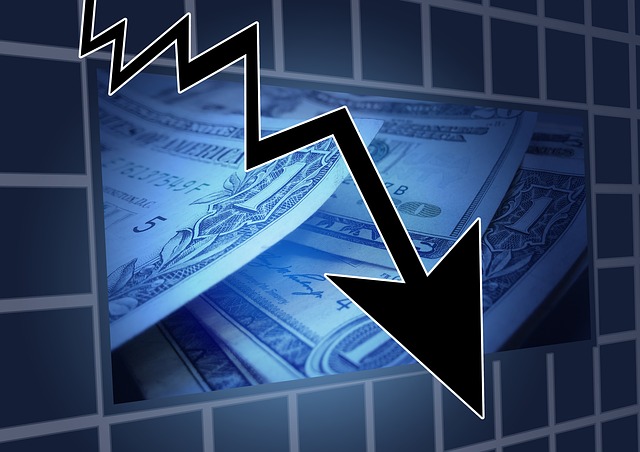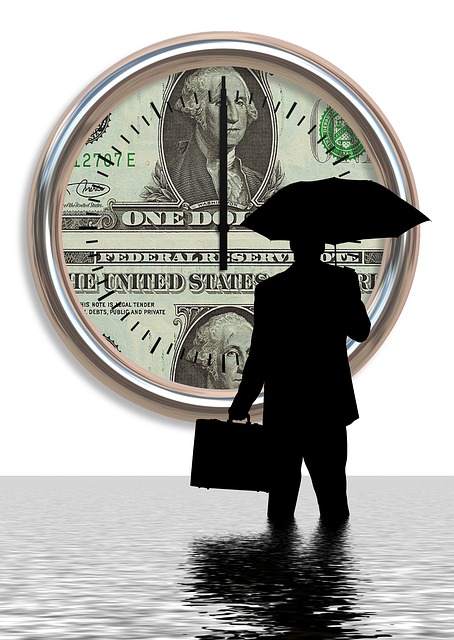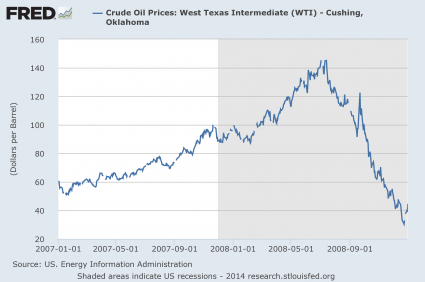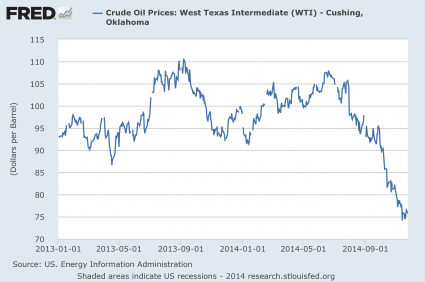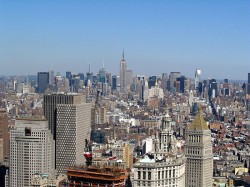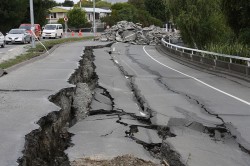 2011 has already been the most memorable year in ages and we haven’t even reached April yet. Revolutions have swept the Middle East, an unprecedented earthquake and tsunami have hit Japan, civil war has erupted in Libya, the price of oil has been soaring and the entire globe is teetering on the brink of economic collapse. It seems like almost everything that can be shaken is being shaken. Unfortunately, it does not appear that things are going to settle down any time soon. The Japanese economy has been dealt a critical blow, the European sovereign debt crisis could flare up again at any moment and the U.S. economy could potentially plunge into another recession by the end of the year. The global economy and world financial markets were really struggling to recover even when things were relatively stable. If all of this global instability gets even worse it could literally rip world financial markets apart.
2011 has already been the most memorable year in ages and we haven’t even reached April yet. Revolutions have swept the Middle East, an unprecedented earthquake and tsunami have hit Japan, civil war has erupted in Libya, the price of oil has been soaring and the entire globe is teetering on the brink of economic collapse. It seems like almost everything that can be shaken is being shaken. Unfortunately, it does not appear that things are going to settle down any time soon. The Japanese economy has been dealt a critical blow, the European sovereign debt crisis could flare up again at any moment and the U.S. economy could potentially plunge into another recession by the end of the year. The global economy and world financial markets were really struggling to recover even when things were relatively stable. If all of this global instability gets even worse it could literally rip world financial markets apart.
Yes, things really are that bad. The mainstream media has been really busy downplaying the economic impact of the disaster in Japan and the chaos in the Middle East, but the truth is that these events have huge implications for the global economy. Today our world is more interconnected than ever, so economic pain in one area of the planet is going to have a significant effect on other areas of the globe.
The following are 10 economic disasters which could potentially rip world financial markets to shreds….
#1 War In Libya
Do you think that the “international community” would be intervening in Libya if they did not have a lot of oil? If you actually believe that, you might want to review the last few decades of African history. Millions upon millions of Africans have been slaughtered by incredibly repressive regimes and the “international community” did next to nothing about it.
But Libya is different.
Libya is the largest producer of oil in Africa.
Apparently the revolution in Libya was not going the way it was supposed to, so the U.S. and Europe are stepping in.
Moammar Gadhafi is vowing that this will be a “long war”, but the truth is that his forces don’t stand a chance against NATO.
Initially we were told that NATO would just be setting up a “no fly zone”, but there have already been reports of Libyan tank columns being assaulted and there has even been an air strike on Moammar Gadhafi’s personal compound in Tripoli.
So since when did a “no fly zone” include an attempt to kill a foreign head of state?
Let there be no mistake – the moment that the first Tomahawk cruise missiles were launched the United States declared war on Libya.
Already the Arab League, India, China and Russia have all objected to how this operation is being carried out and they are alarmed about the reports of civilian casualties.
Tensions around the globe are rising once again, and that is not a good thing for the world economy.
On a side note, does anyone recall anyone in the Obama administration even stopping for a moment to consider whether or not they should consult the U.S. Congress before starting another war?
The U.S. Constitution specifically requires the approval of the Congress before we go to war.
But very few people seem to care too much about what the U.S. Constitution says these days.
In any event, the flow of oil out of Libya is likely to be reduced for an extended period of time now, and that is not going to be good for a deeply struggling global economy.
#2 Revolutions In The Middle East
Protests just seem to keep spreading to more countries in the Middle East. On Friday, five Syrian protesters were killed by government forces in the city of Daraa. Subsequently, over the weekend thousands of protesters reportedly stormed government buildings in that city and set them on fire.
Things in the region just seem to get wilder and wilder.
Even in countries where the revolutions are supposed to be “over” there is still a lot of chaos.
Have you seen what has been going on in Egypt lately?
The truth is that all of North Africa and nearly the entire Middle East is aflame with revolutionary fervor.
About the only place where revolution has not broken out is in Saudi Arabia. Of course it probably helps that the United States and Europe don’t really want a revolution in Saudi Arabia and the Saudis have a brutally effective secret police force.
In any event, as long as the chaos in the Middle East continues the price of oil is likely to remain very high, and that is not good news for the world economy.
#3 The Japanese Earthquake And Tsunami
Japan is the third largest economy in the world. When a major disaster happens in that nation it has global implications.
The tsunami that just hit Japan was absolutely unprecedented. Vast stretches of Japan have been more thoroughly destroyed than if they had been bombed by a foreign military power. It really was a nation changing event.
The Japanese economy is going to be crippled for an extended period of time. But it is not just Japan’s economy that has been deeply affected by this tragedy.
According to the Wall Street Journal, the recent disaster in Japan has caused supply chain disruptions all over the globe….
A shortage of Japanese-built electronic parts will force GM to close a plant in Zaragoza, Spain, on Monday and cancel shifts at a factory in Eisenach, Germany, on Monday and Tuesday, the company said Friday.
Not only that, GM has also suspended all “nonessential” spending globally as it evaluates the impact of this crisis.
The truth is that there are a whole host of industries that rely on parts from Japan. Supply chains all over the world are going to have to be changed as a result of this crisis. There are going to be some shortages of certain classes of products.
Japan is a nation that imports and exports tremendous quantities of goods. At least for a while both imports and exports will be significantly down, and that is not good news for a world economy that was already having a really hard time recovering from the recent economic downturn.
#4 The Japan Nuclear Crisis
Even if the worst case scenario does not play out, the reality is that the crisis at the Fukushima Dai-ichi nuclear plant is going to have a long lasting impact on the global economy.
Already, nuclear power projects all over the world are being rethought. The nuclear power industry was really starting to gain some momentum in many areas of the globe, but now that has totally changed.
But of much greater concern is the potential effect that all of this radiation will have on the Japanese people. Radiation from the disaster at the Fukushima Dai-ichi nuclear plant is now showing up in food and tap water in Japan as an article on the website of USA Today recently described….
The government halted shipments of spinach from one area and raw milk from another near the nuclear plant after tests found iodine exceeded safety limits. But the contamination spread to spinach in three other prefectures and to more vegetables — canola and chrysanthemum greens. Tokyo’s tap water, where iodine turned up Friday, now has cesium.
Hopefully the authorities in Japan will be able to get this situation under control before Tokyo is affected too much. The truth is that Tokyo is one of the most economically important cities on the planet.
But right now there is a lot of uncertainty surrounding Tokyo. For example, one very large German real estate fund says that their holdings in Tokyo are now “impossible to value” and they have suspended all customer withdrawals from the fund.
Once again, let us hope that a worst case scenario does not happen. But if we do get to the point where most of the population had to be evacuated from Tokyo for an extended period of time it would be absolutely devastating for the global economy.
#5 The Price Of Oil
Most people believe that the U.S. dollar is the currency of the world, but really it is oil. Without oil, the global economy that we have constructed simply could not function.
That is why it was so alarming when the price of oil went above $100 a barrel earlier this year for the first time since 2008. Virtually everyone agrees that if the price of oil stays high for an extended period of time it will have a highly negative impact on the world economy.
In particular, the U.S. economy is highly, highly dependent on cheap oil. This country is really spread out and we transport goods and services over vast distances. That is why the following facts are so alarming….
*The average price of a gallon of gasoline in the United States is now 75 cents higher than it was a year ago.
*In San Francisco, California, the average price of a gallon of gasoline is now $3.97.
*According to the Oil Price Information Service, U.S. drivers spent an average of $347 on gasoline during the month of February, which was 30 percent more than a year earlier.
*According to the U.S. Energy Department, the average U.S. household will spend approximately $700 more on gasoline in 2011 than it did during 2010.
#6 Food Inflation
Many people believe that the rapidly rising price of food has been a major factor in sparking the revolutions that we have seen in Africa and the Middle East. When people cannot feed themselves or their families they tend to lose it.
According to the United Nations, the global price of food hit a new all-time high earlier this year, and the UN is expecting the price of food to continue to go up throughout the rest of this year. Food supplies were already tight around the globe and this is certainly not going to help things.
The price of food has also been going up rapidly inside the United States. Last month the price of food in the United States rose at the fastest rate in 36 years.
American families are really starting to feel their budgets stretched. According to the U.S. Labor Department, the cost of living in the United States hit a brand new all-time record high in the month of February.
What this means is that U.S. families are going to have less discretionary income to spend at the stores and that is bad news for the world economy.
#7 The European Sovereign Debt Crisis
Several European governments have had their debt downgraded in the past several months. Portugal, Spain, Greece and Ireland are all in big time trouble. Several other European nations are not far behind them.
Right now Germany seems content to bail the “weak sisters” in Europe out, but if that changes at some point it is going to be an absolute nightmare for world financial markets.
#8 The Dying U.S. Dollar
Right now there is a lot of anxiety about the U.S. dollar. Prior to the tsunami, Japan was one of the primary purchasers of U.S. government debt. In fact, Japan was the second-largest foreign buyer of U.S. Treasuries last year.
But now as Japan rebuilds from this nightmare it is not going to have capital to invest overseas. Someone else is going to have to step in and buy up all of the debt that the Japanese were buying.
Not only that, but big bond funds such as PIMCO have announced that they are stepping away from U.S. Treasuries at least for now.
So if Japan is not buying U.S. Treasuries and bond funds such as PIMCO are not buying U.S. Treasuries, then who is going to be buying them?
The U.S. government needs to borrow trillions of dollars this year alone to roll over existing debt and to finance new debt. All of that borrowing has got to come from somewhere.
#9 The U.S. Housing Market
The U.S. housing market could potentially be on the verge of another major crisis. Just consider the following facts….
*In February, U.S. housing starts experienced their largest decline in 27 years.
*Deutsche Bank is projecting that 48 percent of all U.S. mortgages could have negative equity by the end of 2011.
*Two years ago, the average U.S. homeowner that was being foreclosed upon had not made a mortgage payment in 11 months. Today, the average U.S. homeowner that is being foreclosed upon has not made a mortgage payment in 17 months.
*In September 2008, 33 percent of Americans knew someone who had been foreclosed upon or who was facing the threat of foreclosure. Today that number has risen to 48 percent.
#10 The Derivatives Bubble
Most Americans do not even understand what derivatives are, but the truth is that they are one of the biggest threats to our financial system. Some experts estimate that the worldwide derivatives bubble is somewhere in the neighborhood of a quadrillion dollars. This bubble could burst at any time. Right now we are watching the greatest financial casino in the history of the globe spin around and around and around and everyone is hoping that at some point it doesn’t stop. Today, most money on Wall Street is not made by investing in good business ideas. Rather, most money on Wall Street is now made by making shrewd bets. Unfortunately, at some point the casino is going to come crashing down and the game will be over.
Most people simply do not realize how fragile the global economy is at this point.
The financial crash of 2008 was a devastating blow. The next wave of the economic crisis could be even worse.
So what will the rest of 2011 bring?
Well, nobody knows for sure, but a lot of experts are not optimistic.
David Rosenberg, the chief economist at Gluskin Sheff and Associates, is warning that the second half of the year could be very rough for the global economy….
“A sharp slowing in global GDP in the second half of the year cannot be ruled out.”
Let us hope that the world economy can hold together and that we can get through the rest of 2011 okay. The last thing we need is a repeat of 2008. The world could use some peace and some time to recover.
But unfortunately, we live in a world that is becoming increasingly unstable. With the way that the world has been lately, perhaps we should all just start to expect the unexpected.
But world financial markets do not respond well to instability and unpredictability. In fact, investors tend to start fleeing to safety at the first signs of danger these days.
Most Americans simply have no idea how vulnerable the world financial system is at this point. Nothing really got “fixed” after 2008. If anything, global financial markets are even more fragile than they were back then.
So what do all of you think about the state of the global economy? Please feel free to leave a comment with your opinion below….
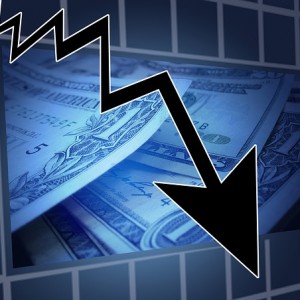 It isn’t just the price of oil that is collapsing. The last time commodity prices were this low was during the immediate aftermath of the last financial crisis. The Bloomberg Commodity Index fell to 110.4571 on Monday – the lowest that it has been since April 2009. Just like junk bonds, industrial commodities are a very reliable leading indicator. In other words, prices for industrial commodities usually start to move in a particular direction before the overall economy does. We witnessed this in the summer of 2008 when a crash in commodity prices preceded the financial crisis in the fall by a couple of months. And right now, we are witnessing what may be another major collapse in commodity prices. In recent weeks, the price of copper has declined substantially. So has the price of iron ore. So has the price of nickel. So has the price of aluminum. You get the idea. So this isn’t just about oil. This is a broad-based commodity decline, and if it continues it is really bad news for the U.S. economy.
It isn’t just the price of oil that is collapsing. The last time commodity prices were this low was during the immediate aftermath of the last financial crisis. The Bloomberg Commodity Index fell to 110.4571 on Monday – the lowest that it has been since April 2009. Just like junk bonds, industrial commodities are a very reliable leading indicator. In other words, prices for industrial commodities usually start to move in a particular direction before the overall economy does. We witnessed this in the summer of 2008 when a crash in commodity prices preceded the financial crisis in the fall by a couple of months. And right now, we are witnessing what may be another major collapse in commodity prices. In recent weeks, the price of copper has declined substantially. So has the price of iron ore. So has the price of nickel. So has the price of aluminum. You get the idea. So this isn’t just about oil. This is a broad-based commodity decline, and if it continues it is really bad news for the U.S. economy.